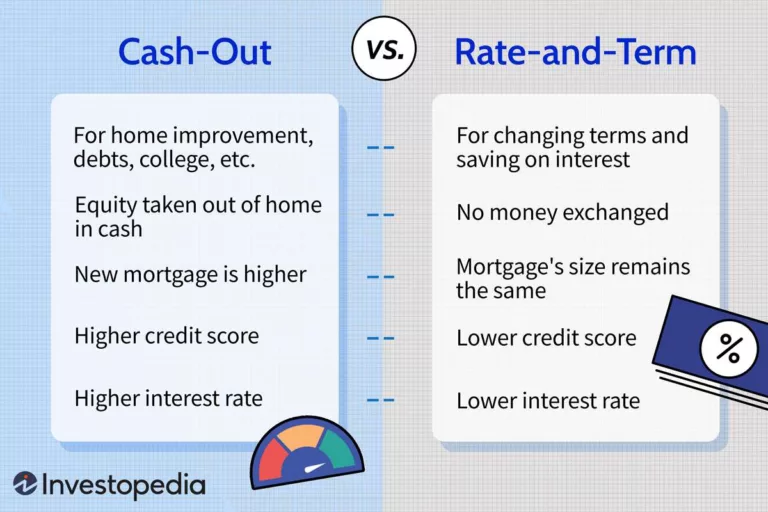How to Effortlessly Port Your Mortgage: A Step-by-Step Guide
To port a mortgage, contact your current lender to obtain a mortgage porting agreement and then apply for a new mortgage with a different property. Porting a mortgage involves transferring your existing mortgage to a new property.
This can be a useful option if you’re looking to move but want to keep your current mortgage terms. Rather than paying off your mortgage and taking out a new one, porting allows you to transfer your current mortgage to a new property.
However, there are several steps involved in the process. We’ll explore how to port a mortgage, the benefits, and things to consider before making this decision.

Credit: www.newhomesource.com
Understanding Mortgage Portability
What Is Mortgage Portability?
Mortgage portability is a feature that allows homeowners to transfer their existing mortgage from one property to another without paying penalties or incurring additional fees. It provides flexibility and convenience for those who want to move homes but wish to maintain their current mortgage terms. This process involves transferring the remaining balance, interest rate, and term of the mortgage to the new property.
Benefits Of Mortgage Portability
There are several benefits to consider when it comes to mortgage portability:
- Cost savings: By choosing a portable mortgage, you can avoid breaking your current mortgage and potentially paying hefty penalties. This can save you thousands of dollars in fees.
- Retaining favorable terms: If you have an attractive interest rate or favorable mortgage terms, portability allows you to keep them intact, even if market conditions have changed.
- Time-saving: Instead of going through the process of applying for a new mortgage, you can transfer your existing mortgage to your new property, saving you time and effort.
- Stress-free transition: Mortgage portability eliminates the need to coordinate closing dates and manage overlapping mortgage payments. It streamlines the process, making your move to a new home less stressful.
Overall, mortgage portability offers homeowners the ability to seamlessly transition from one property to another while preserving their mortgage terms. It is a beneficial feature that can save you money, time, and unnecessary hassle during a house move. Make sure to consult with your mortgage lender or broker to determine if porting your mortgage is the right choice for you.
Evaluating Portability Options
Discover how to successfully port a mortgage by evaluating different portability options. Learn about the key factors to consider and make an informed decision to ensure a smooth process.
Check Your Mortgage Agreement
Start by thoroughly reviewing your mortgage agreement to understand the terms and conditions related to portability. Look for key information such as whether your mortgage is portable, and if there are any restrictions or fees associated with porting. Identify the time frame within which you must initiate the porting process, as well as any specific requirements or documentation needed.
Assess The Current Market Conditions
Before making any decisions, it’s essential to assess the current market conditions. Take a look at prevailing interest rates and housing market trends. Compare the rate on your existing mortgage with the current rates available for new mortgages. This will help you determine whether porting your mortgage is financially advantageous. Keep in mind that savings on interest rates can vary, so it’s a good idea to consult with a financial advisor or mortgage specialist for personalized guidance.
Consider The Costs Involved
Porting a mortgage may involve certain costs that you need to consider. Take into account any applicable fees or penalties that may be associated with the porting process. These can include discharge fees for your existing mortgage and legal fees for transferring the mortgage to a new property. Additionally, you should assess whether obtaining a new mortgage might result in lower costs overall, even with the associated fees. A comparison of the costs involved will help you determine the most financially sensible option.
Ultimately, evaluating portability options involves a thorough analysis of your mortgage agreement, market conditions, and cost factors. By carefully considering these aspects, you will be better equipped to make an informed decision about porting your mortgage to a new property.
Preparing For The Porting Process
Preparing for the porting process is crucial when it comes to transferring your mortgage. Learn how to seamlessly port your mortgage with a few simple steps.
Review Your Financial Situation
Before moving forward with the porting process, it is crucial to review your financial situation. Take a close look at your current income, expenses, and any outstanding debts or loans. This will help determine whether porting your mortgage is a viable option for you. Consider factors such as your credit score, job stability, and any potential changes in your financial circumstances in the future.
Gather Necessary Documentation
To ensure a smooth porting process, gather all the necessary documentation beforehand. This will save you time and prevent any delays. Some of the key documents you may need include:
- Proof of identification: Provide a valid government-issued ID, such as a driver’s license or passport.
- Proof of income: Gather recent pay stubs or employment letters that demonstrate your current income.
- Bank statements: Prepare recent bank statements that show your savings, investments, and transactions.
- Proof of assets: Provide documentation of any assets you own, such as properties or investments.
- Current mortgage details: Have all the information regarding your current mortgage, including the term, interest rate, and outstanding balance.
Contact Your Current Lender
Once you have reviewed your financial situation and gathered the necessary documentation, it’s time to contact your current lender. Reach out to them to discuss your intent to port your mortgage. This step is crucial as it allows you to understand the porting process specific to your lender. Remember to inquire about any fees, penalties, or restrictions tied to porting your mortgage.
During your conversation with the lender, have your documentation on hand to refer to if needed. Make sure to ask any questions you may have and clarify any doubts you might be having. Understanding the porting process will help you make informed decisions and better navigate this financial transaction.

Credit: www.medicalnewstoday.com
Initiating The Porting Process
So, you’ve decided to port your mortgage and enjoy the benefits of transferring it to a new property. But, where do you start? Initiating the porting process is essential to ensure a smooth transition and make the most of your mortgage. In this article, we will guide you through the necessary steps and provide valuable tips for successfully initiating the porting process. Let’s get started!
Submit A Mortgage Application
To begin the porting process, the first step is to submit a mortgage application to your new lender. This application will include important details about the property you wish to move to, your financial information, and any required supporting documents. Be sure to complete the application accurately, as any errors or missing information may cause delays in the porting process.
Negotiate With Your Current Lender
Once you’ve submitted your mortgage application, it’s time to negotiate with your current lender. This step is crucial as it involves discussing the porting terms, including the interest rate, remaining term, and potential fees. Reach out to your lender and express your intention to port your mortgage, emphasizing your desire to maintain the existing terms and conditions, if beneficial. A successful negotiation can help you secure favorable terms for your ported mortgage, potentially saving you money in the long run.
Get Approval For The Port
After negotiating with your current lender, the next step is obtaining approval for the port. Your new lender will review your application, financial details, and the porting terms to assess your eligibility. It’s crucial to provide all requested documents promptly and cooperate with both lenders throughout the process. The approval stage may involve a home appraisal and credit check, so stay prepared and ensure your finances are in order. Once you receive the approval, you can proceed with finalizing the porting process.
By following these steps, you can initiate the porting process and pave the way for a seamless transition to your new property. Remember to submit a mortgage application, negotiate with your current lender, and secure approval for the port. By taking these proactive measures, you’ll be on your way to enjoying the benefits of transferring your mortgage hassle-free. Stay tuned for our next article as we delve deeper into the porting process!
Completing The Porting Process
Porting a mortgage can be a complex process, but by following these steps, you can successfully complete the porting process. Ensure a smooth transition by understanding the guidelines and requirements for mortgage porting.
Transfer Your Mortgage To The New Property
Once you have made the decision to port your mortgage, the first step in completing the process is to transfer your mortgage to the new property. This involves working closely with your lender to ensure a seamless transition from your current home to the new one.
Here are the simple steps you need to follow:
- Contact your lender: Get in touch with your mortgage lender and inform them about your intent to port your mortgage. They will guide you through the process and provide you with all the necessary documents to complete the transfer.
- Provide information about the new property: You will need to provide detailed information about the new property, including the address, purchase price, and any additional details requested by your lender. This will help them assess the property and determine if it meets their criteria for porting your mortgage.
- Assess the existing mortgage: Your lender will review your existing mortgage terms and conditions to ensure they can be transferred to the new property. They will consider factors such as the remaining balance, interest rate, and any penalties or fees associated with the transfer. This assessment will help determine if porting your mortgage is financially beneficial for you.
- Confirm eligibility: Your lender will assess your financial situation to ensure you meet their eligibility criteria for porting your mortgage. They will consider factors such as your credit score, income stability, and employment status. This step is crucial in determining if you qualify for the porting process.
- Receive an offer: Once your lender has assessed all the necessary details, they will provide you with an offer outlining the terms and conditions for porting your mortgage to the new property. It is important to carefully review this offer and seek professional advice if needed.
Review The Terms And Conditions
After receiving the offer from your lender, it is crucial to review the terms and conditions thoroughly. This will ensure you understand all the details and implications of porting your mortgage. Consider the following:
- Interest rate: Check if the interest rate offered for porting your mortgage is competitive compared to the current market rates. If it is higher, you may want to explore other options or negotiate with your lender.
- Penalties and fees: Pay close attention to any penalties or fees associated with the transfer. These could include prepayment penalties, administration fees, or legal fees. Understanding these costs will help you make an informed decision.
- Terms and conditions: Review all the terms and conditions of the new mortgage carefully. Pay attention to details such as the length of the mortgage term, payment schedule, and any additional clauses or restrictions that may apply.
- Seek professional advice: If you are uncertain about any aspect of the terms and conditions, it is advisable to seek professional advice from a mortgage broker or a financial advisor. They can provide valuable insights and help you make an informed decision.
Make Necessary Adjustments
Before finalizing the porting process, it is essential to make any necessary adjustments to ensure a smooth transition to the new property. Consider the following:
- Property assessment: If the new property requires an appraisal or inspection, arrange for it to be done. This will help determine the value and condition of the property, ensuring that it aligns with your lender’s requirements.
- Insurance coverage: Update your homeowner’s insurance policy to include the new property. Contact your insurance provider and provide them with the necessary details.
- Legal documentation: Complete any legal documentation required for the transfer of your mortgage to the new property. This may include signing new mortgage agreements or other legal documents as per your lender’s requirements.
- Notify relevant parties: Inform relevant parties, such as your real estate agent, lawyer, and insurance provider, about the transfer of your mortgage to ensure a smooth transition.
- Plan for moving: Start planning your move to the new property well in advance. Arrange for the necessary logistics, such as hiring movers, packing, and organizing your belongings.

Credit: www.facebook.com
Frequently Asked Questions On How To Port A Mortgage
Is It Difficult To Port A Mortgage?
Porting a mortgage is not difficult. It involves transferring your existing mortgage to a new property. The process may require administrative work and paperwork, but it’s a common practice in the mortgage industry. Talk to your lender for more information and assistance.
How Does It Work To Port A Mortgage?
Porting a mortgage involves transferring your existing mortgage to a new property. The process allows you to maintain the same interest rate and terms, avoiding penalties. By completing an application with your current lender, you can determine if you are eligible to port your mortgage.
Is It Common To Port A Mortgage?
Yes, it is common to port a mortgage.
Can You Port Your Mortgage At Any Time?
Yes, you can port your mortgage at any time without any restrictions or limitations.
Conclusion
Porting a mortgage can be a beneficial option for homeowners looking to save on interest rates or avoid penalties when moving to a new property. By following the necessary steps and consulting with a mortgage professional, individuals can seamlessly transfer their existing mortgage to a new property, ensuring a smooth transition and potential cost savings.
Remember, conducting thorough research and considering all factors is essential in making an informed decision about mortgage portability.




